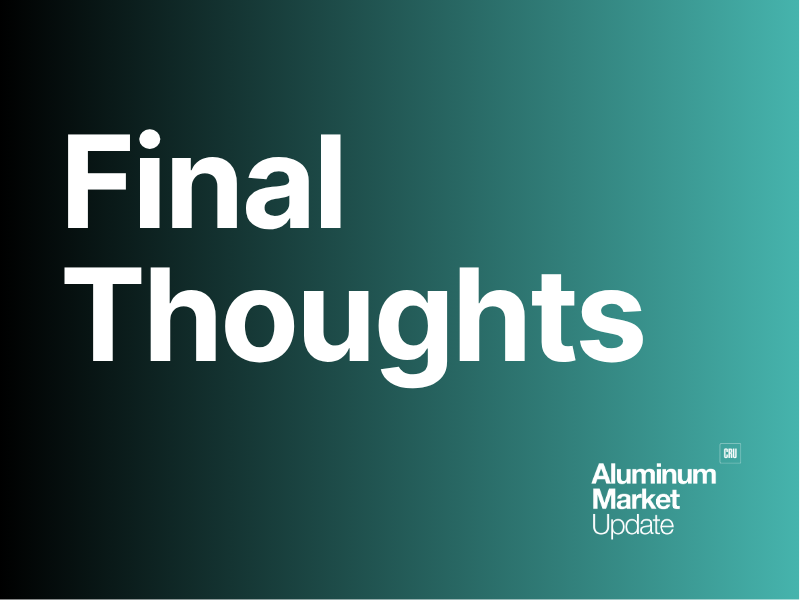Building & Construction

September 2, 2025
Crosscurrents in non-residential construction Part 1: Spending, billings, backlog
Written by Nicholas Bell
Construction remains one of the most important end-use markets for aluminum, with non-residential segments alone accounting for the majority of aluminum demand by volume compared to residential building.
Recent data from the U.S. Census Bureau, the AIA/Deltek Architectural Billings Index, Associated Builders and Contractors, and Dodge Construction Network provide a complex picture of where the market may be headed.
Census construction spending
Public spending rose 5.2% year-over-year, while private spending fell by the same margin, down 5.2% from June 2024. Because of the sharp contrast between the two main funding stream for construction, it’s important to note up front that public dollars account for only about one quarter of the total value of U.S. construction in any given month, with private projects making up the remaining three quarters.
On the non-residential side, a handful of categories – office, commercial, educational, highway and street, power, and manufacturing – together make up nearly three-quarters of all non-residential spending. While that may sound like a wide spread of sectors, there are still 10 additional categories rolled into the non-residential tally. As a result, even sharp swings in those smaller buckets have only a muted effect on the overall figures, like the nearly 17% year-over-year in religious construction spending, while the big six categories carry disproportionate weight in driving the total.
Within non-residential construction, commercial work remains one of the softest points. Commercial spending fell 9.4% year-over-year in June, with privately funded commercial work specifically down 10.9%. This figure would reflect retail and mixed-use developments that would apply to aluminum demand in the form of storefront systems, curtain walls, and other exteriors.
Manufacturing, the single largest non-residential category, also posted a decline, falling 5.9% year-over-year. Given that these figures are reported at an annualized rate, the contraction carries extra weight.
Despite narratives of tariffs and reshoring driving new factory investment, the pull back in real dollar spending suggests the wave of factory builds is losing momentum rather than accelerating – at least when it comes to the first couple of months of implemented tariffs. This is especially notable given that construction costs have risen faster than broader inflation, a dynamic that would normally offset any decline in headline spending.
Public construction was stronger on a year-over-year basis, up 5.2%, but the growth trend has been flattening through the second quarter of the year. Spending has risen less than a tenth of a percent since April, again on an annualized basis, which suggests much of the momentum from infrastructure programs is already reflected in current totals rather than expanding further.
Architectural Billings Index
The American Institute of Architects (AIA) and Deltek reported that the Architectural Billings Index (ABI) registered a score of 46.2 in July 2025, signaling another month of contraction for U.S. architecture firms. The ABI, a diffusion index where reading below 50 indicates declining billings, has been in negative territory for nine consecutive months and recorded contraction in 31 of the past 34 months.
Both major components of the ABI – billings and design contracts – remained in the red, although design contracts did show a slight improvement from June. Regionally, the Midwest posted the weakest score at 45.1, overtaking the West as the softest market, while the Northeast (47.8) and South (47.5) fared only marginally better.
By sector, residential architecture billings were the lowest at 43.7, while institutional work held at 47.9. The third sector, commercial/industrial index posted the highest reading at 49.9, just a tick below growth and stronger than institutional and residential design work, which seems at odds with the collapse in spending at first glance. In the census data, commercial non-residential spending is one of the sharpest decliners, down nearly 10% from a year ago.
That said, the ABI typically leads non-residential construction activity by 9-12 months. The reading may signal commercial work is closer to finding a floor. Coming off such low levels, even a modest pickup in billings or design contracts could translate into a comparatively stronger recovery window in 2026 than for institutional or residential architecture.
Construction Backlog Indicator
The Associated Builders and Contractors’ Construction Backlog Indicator (CBI) rose to 8.8 months in July 2025, up 0.1 months from June and 0.4 months from a year earlier. Backlog increased year-over-year in every region except the South, which continues to post the deepest pipeline despite slower growth.
By company size, larger firms have the longest queue of work, with projects over $100 million averaging 12.3 months of backlog, an increase of 0.4 months from June and slightly above last year. Projects under $30 million logged have logged a notable increase, climbing nearly 10% since July 2024, though the month-to-month pipeline eased slightly from June.
ABC’s Construction Confidence Index shows a more cautious tone. The July reading for sales expectations dipped to 60.4 from 62.8 in June, though it still remains above 50, signalling that most firms still anticipate growth.
Respondents flagged tariff-related price escalation as a major concern, with more than 80% of firms reporting notifications of upcoming increases.
The construction queue for infrastructure construction remains the longest at 9.6 months. While infrastructure consistently posts lengthy backlogs and underpins much of public construction spending, that strength often reflects the nature of the work.
These infrastructure building projects tend to be financed with guaranteed funding streams and extended approval processes that move more slowly, but also making them less susceptible to abrupt starts and stops than the privately financed sector.
The commercial and institutional sector registered a strong backlog figure of 9.2 months, a significant uptick on a month-to-month, as well as a year-to-year basis.
Again, this figure comes amid census figures showing commercial non-residential spending down nearly 10% year-over-year.
The ABI and the ABC Construction Backlog contrasted with the spending suggests the sector may be nearing an inflection point. Spending levels are depressed, but new awards are beginning to accumulate in backlogs, and the ABI’s 49.9 reading is within the reach of growth and the best figure of the three sectors tracked by the ABI.
The trends seemingly indicate commercial construction being both the hardest hit in the present and potentially the best positioned for a recovery in the next 9-12 months.
In fact, the institutional sector being lumped in with the commercial sector in backlog figures may work against readings of the commercial backlog moving forward.
Institutional work shows a more mixed picture. Its backlog remains solid and it scored higher than residential but below commercial, albeit it all three in contraction. That implies sector-specific dynamics are shaping activity, which would include schools, hospitals, public facilities, rather than a uniform downturn across all categories.
By contrast, heavy industrial work appears to be firmly in the doldrums. Spending on manufacturing structures noted earlier fell nearly 6% year-over-year in June, and heavy industrial backlog now sits at just 5.1 months – the lowest of any tracked sector and down sharply from last year.
With no forward signal of turnaround from either the ABI or backlog data, this segment looks the most vulnerable, underscoring that a resurgence in domestic manufacturing has yet to translate into a sustained build cycle.
Follow over to Part 2, where the Dodge data is explored in detail and the broader narrative across spending, backlog, and planning is tied into a construction outlook.







